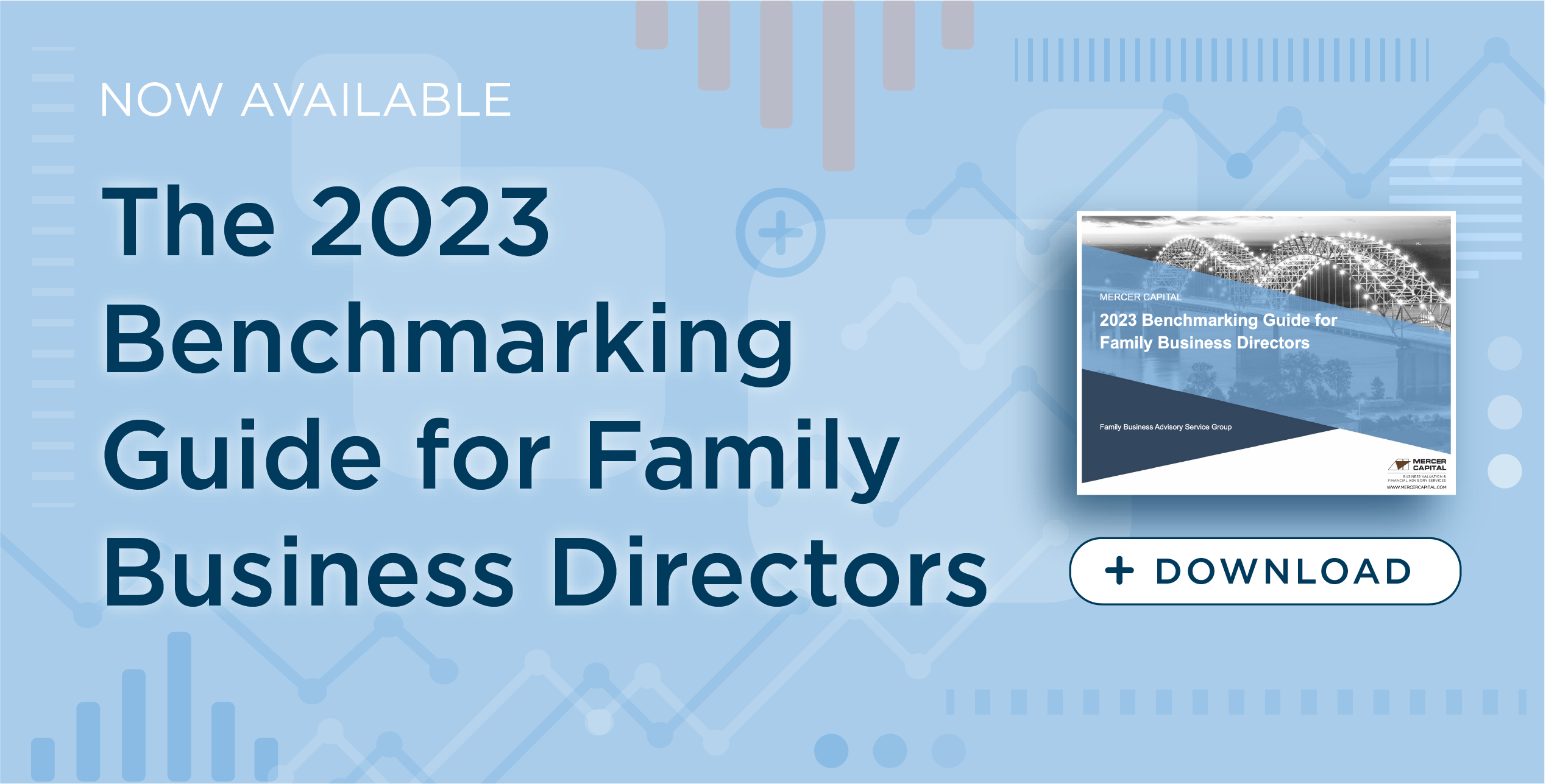Credit Market Outlook: 2020
Regardless of how much debt a family business operates with, access to credit when it is needed is essential. In this week’s post, Andy Gibbs describes the key factors affecting banks’ willingness to loan money to family businesses, and provides an overview of what the credit outlook looks like for 2020.
Last week witnessed JPMorgan Chase & Co. report the largest fiscal year profit in history by any U.S. bank, fueled by a blowout fourth quarter for fixed income sales and trading. Most money center banks, such as Citigroup and Bank of America, reported strong performance as well, with the sole laggard being Wells Fargo due to its conduct and regulatory issues. The SNL Bank Index, comprised of all U.S. publicly-traded banks, outperformed the S&P 500 index in 2019, rising by 32% versus 29% for the S&P 500.
The headlines, though, belie some challenges facing the banking industry, which generally fall into two categories:
1) Interest Rates. After the market volatility in late 2018, the Federal Reserve reduced its interest rate target three times over the course of 2019 given concerns about slowing economic growth. Further, the yield curve “inverted” during 2019, meaning that long-term interest rates fell below short-term rates, which some prognosticators viewed as a recessionary signal. While good for borrowers, these interest rate conditions decreased banks’ revenue from lending activities. Savers also felt a squeeze on deposit rates as 2019 progressed.
2) Loan Demand. Loan demand generally was weaker in 2019 than in 2018. Many explanations have been cited for this trend, but the most common include the following:
- Economic uncertainty. This was the most frequently cited reason for why businesses held back on borrowing in 2019. Economic uncertainty is a catch-all category for the effect on businesses’ capital expenditure and expansion plans caused by trade wars, Brexit, Megxit, the Iranian conflict, the 2020 election, and other issues du jour. By definition, an economic outlook can never be “certain,” but by this interpretation conditions in 2019 were more uncertain than normal.
- Labor market. This explanation for weak loan demand traces back to the tight labor market. In this view, companies are hesitant to expand their operations or facilities, despite generally favorable economic conditions, because of concern about staffing the new facilities (or staffing the facilities without sacrificing hiring standards). That is, the constraint on expansion now is not customer demand or access to financing, but human resources.
- Alternative funding sources. Non-bank capital providers enter and exit the market based on capital market conditions. In 2019, the capital markets opened wide for issuers. This especially affected banks’ commercial real estate loan portfolios, as borrowers throughout 2019 refinanced bank loans into conduits for commercial mortgage-backed securities or with non-bank lenders such as life insurers. Often, these lenders offered terms that banks were unwilling to match, such as nonrecourse financing. Borrowers, however, seized an excellent opportunity with both favorable rates and loan structures.
One item not listed above as a challenge for banks is credit quality. Despite the prolonged economic expansion, credit quality remains favorable throughout the banking industry. Sporadic issues have occurred at some banks, but no adverse trends for the industry are apparent. Some economic sectors have generated concern – such as energy, agriculture, and retail – but any loan losses incurred so far have been manageable. Further, bank underwriting for consumer loans does not appear to be slipping towards pre-2008 levels, as the institutional memory of the crisis remains fresh.
Another development facing banks, and potentially offering alternative sources of financing to businesses, is the emergence of FinTech companies. For consumer lending, FinTech companies have energized the market for personal loans, which banks had generally avoided. Other FinTech companies have had success in niches such as refinancing student loans and financing point of sale purchases. While FinTech companies made the most headway, at least initially, in consumer lending, the small business lending market is too large for them to ignore. We expect to see continued forays by FinTech companies into small business lending, offering greater convenience and slicker technology than stodgier banks.
The credit market outlook for 2020 should remain favorable to commercial borrowers for several reasons:
- Usually, banks tighten lending standards when problem loans and loan losses begin rising, but there is little evidence of deteriorating asset quality.
- Some banks are under pressure by regulators to limit the level of “nonowner” occupied commercial real estate, which includes properties like hotels, retail centers, and office buildings. This has led to near hand-to-hand combat for loans secured by owner-occupied commercial real estate, like a company’s headquarters site or distribution facilities. General commercial lending, such as working capital lines of credit, remains attractive from a regulatory standpoint as well.
- The capital markets’ appetite for loans is voracious now, although this source of funding can be fickle if market conditions shift unexpectedly.
- The new FinTech lenders likely will target the smallest of small businesses initially but bear watching as an alternative credit provider.
While we cannot guarantee that credit market conditions will not deteriorate during 2020, we can confidently make one prediction – “uncertainty” will continue in 2020.
 Family Business Director
Family Business Director 











